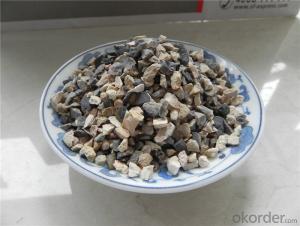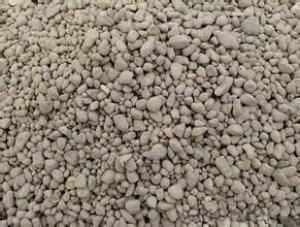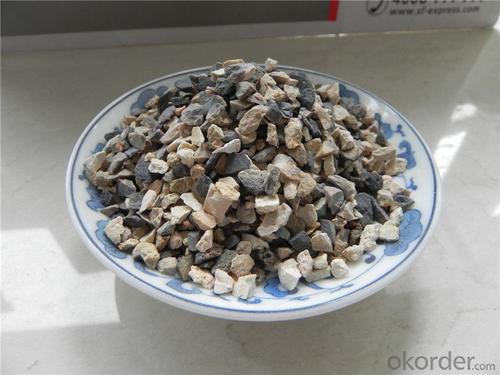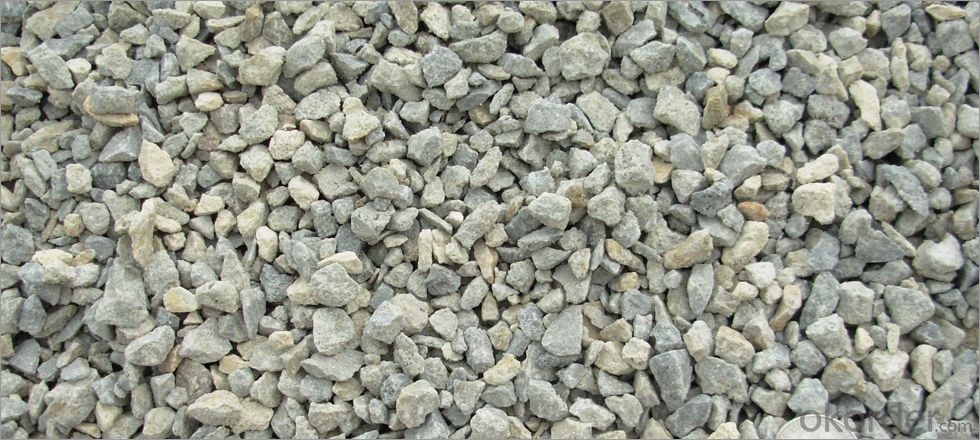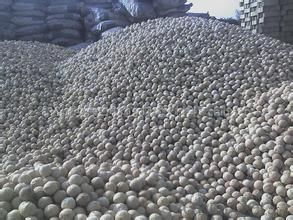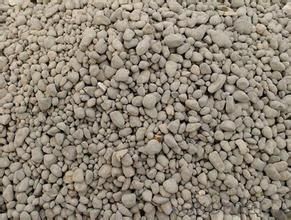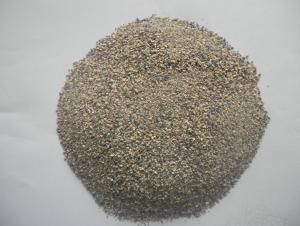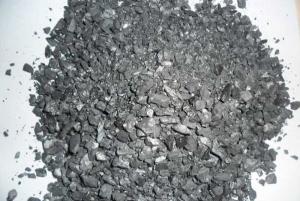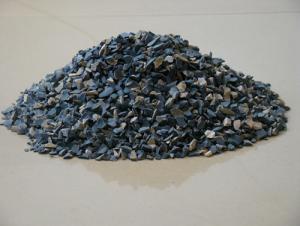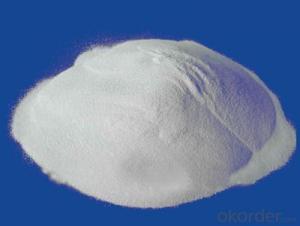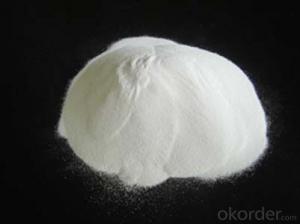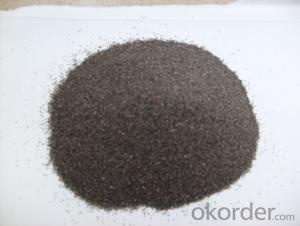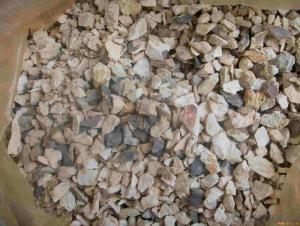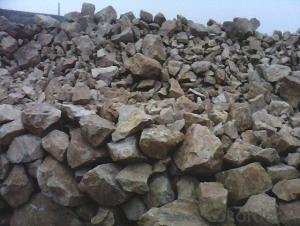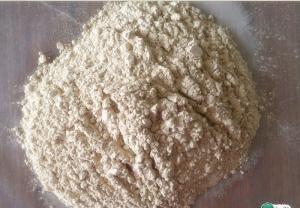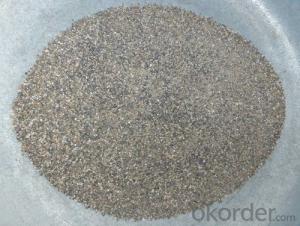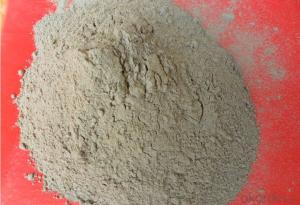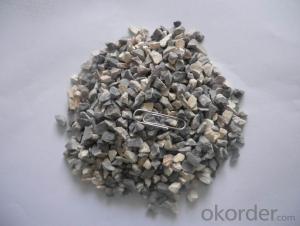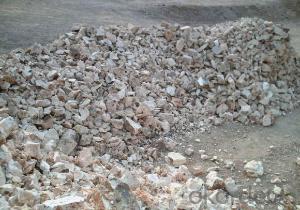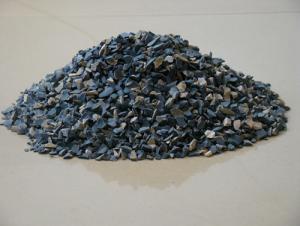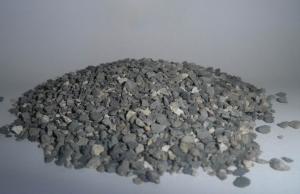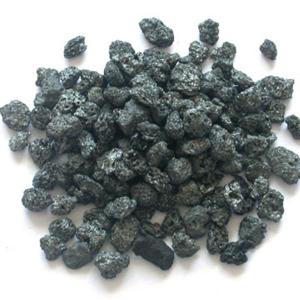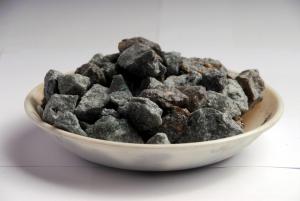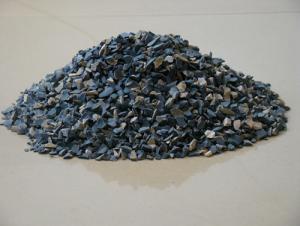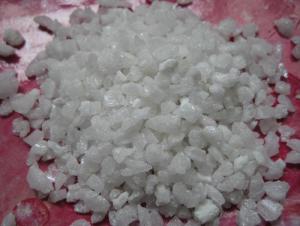Raw Materials for Refractory:84% Alumina 200 Mesh Calcined Bauxite with Low Price
- Loading Port:
- Tianjin
- Payment Terms:
- TT OR LC
- Min Order Qty:
- 25 m.t.
- Supply Capability:
- 30000 m.t./month
OKorder Service Pledge
OKorder Financial Service
You Might Also Like
84% Alumina 200 Mesh Calcined Bauxite with Low Price
Specifications
1. We directly supply calcined bauxite
2. Al2O3:70%/75%/80%/85%/86%/88%/90%
3. Size:0-1-3-5-8-10/200mesh/325mesh/400mesh/500mesh
Size:
Lumps /Grains:0-1mm,1-3mm,3-5mm,5-8mm /Powders:100mesh, 200mesh,325mesh
Product Description:
Bauxite, alumina or bauxite miner , main ingredients are aluminum oxide, hydrate alumina containing impurities,
is an earthy mineral.White or grey, brown yellow or light red by iron.From 4 to 3.9 g/cm3 density, hardness, 1 ~ 3, opaque, very brittle.
Very difficult to melt.Insoluble in water, soluble in sulfuric acid, sodium hydroxide solution.Mainly used for aluminium, refractory material.
Calcined Bauxite Grade:
Shaft Kiln Bauxite
Rotarty Kiln Bauxite
Round Kiln Bauxite
Packaging & Delivery
Packaging Details: In bulk or in 1-1.25mr bag
Product Pictures:
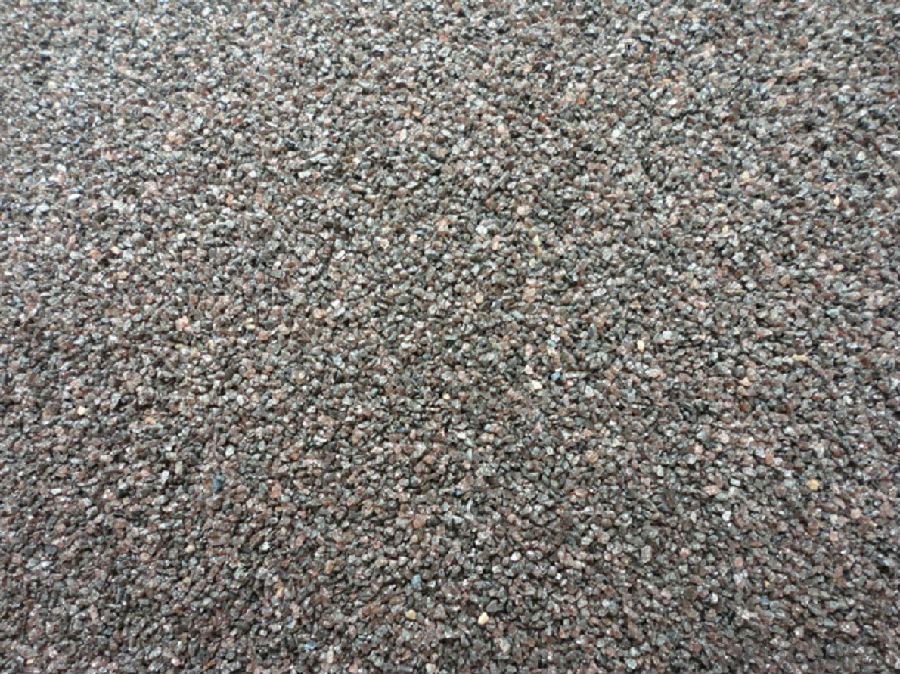
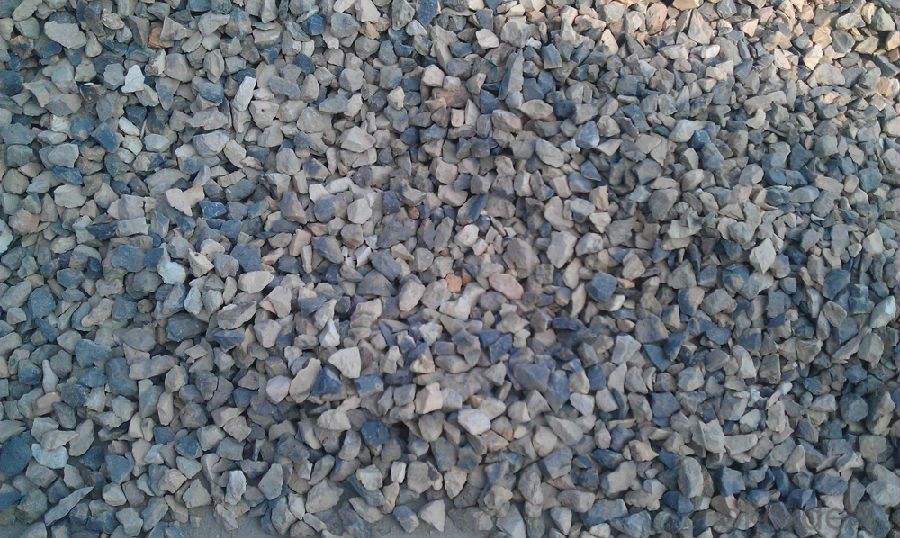
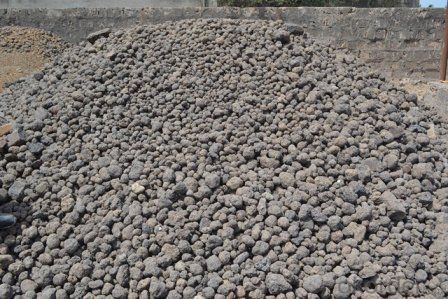
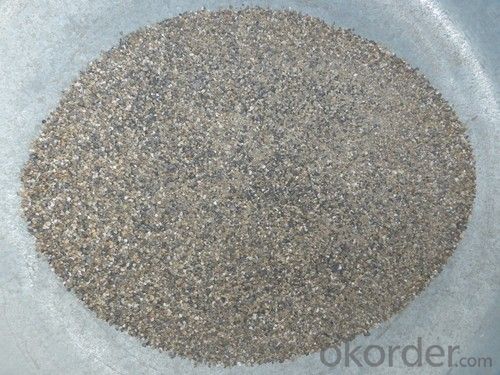
Our Service:
1. Your inquiry related to our products or prices will be replied in 24hours.
2. Manufacturer with large capacity, ensure the fast production cycle after confirmed the order.
3. Our professional technicians will answer your entire enquiry in patient.
4. To meet the refractory solutions, we can serve as your instructions.
5. Protection of sales area and private information for our entire customer.
If you’ve kind enquiries, please don’t hesitate to let us know. ^_^
- Q: What kinds of fireproof and fire retardant materials are there?
- fireproof materials are mainly non-combustible A material and flame retardant B1materials. Class A non-combustible material: Granite, marble, terrazzo, cement products, concrete products, plasterboard, lime products, clay, glass, tiles, mosaics, steel, aluminum, copper alloy; B1 grade flame retardant materials: Ceiling materials gypsum board, gypsum fiber boards, cement particle board, mineral wool acoustic panels, glass wool decorative acoustic board, perlite decorative acoustic board, flame retardant plywood, medium density fiberboard flame, rock wool decorative panels, retardant wood, aluminum composites, flame retardant phenolic plywood, aluminum foil, glass fiber reinforced plastic composite materials; wall materials gypsum board, gypsum fiber boards, cement particle board, mineral wool board, glass wool board, perlite board, flame retardant plywood, retardant MDF, fireproof plastic decorative plates, flame-sided particleboard, colorful paint, flame retardant wallpaper, wall covering flame retardant, flame imitation granite decorative plates, magnesium oxychloride cement prefabricated wall panels, flame retardant glass fiber reinforced plastic plate, PVC plastic sheeting, high-strength lightweight composite panels, fire-retardant molded wood composite board, color retardant plywood, fiberglass and other flame retardant.
- Q: What are the materials of insulation firebricks?
- The raw materials of firebricks, firebricks have various raw materials, and the composition of which can be divided into six categories: soil, stone, sand, mineral, powder and others. One of the raw materials, soil: bauxite, kaoline, clay, diatomite Another raw material, stone: fluorite, kyanite, andalusite, forsterite, vermiculite, mullite, pyrophyllite, chlorite, dolomite, sillimanite, magnesia-alumina spinel, and silica Another raw material, sand: clay sand, zircon sand, quartz sand, and magnesite Another raw materials, mineral: chromium mineral Another raw material, powder: aluminum powder, micro-silica powder, and silicon powder Another raw materials, others: asphalt, graphite, phenolic resin, perlite, cenosphere, sialon, corundum, silicon sulfate, silicon carbide, sodium silicate, silica sol, boron carbide, calcium aluminate cement, nitride material, haydite, aluminum oxide, alumina sol and zirconia, etc.
- Q: what's the fire endurance of fireproof?panel?
- non-asbestos calcium silicate board, fireproof?panel partition will excced over 4 hours, two single 75 keel. 12 mm fireproofing calcium?silicate?board partition, through the monitoring of national fireproof construction materials quality supervision center, it's security and refractory time will reach over 4 hours.
- Q: What are the requirements for the performance of refractory materials?
- Refractory materials should have very high refractoriness, high temperature heat load and resistance to softening, melting; with high volume stability, resistance to high temperature and heat load, volume shrinkage and only uniform expansion; high strength at room temperature and high temperature strength, high load softening temperature, under the joint action of heat load and heavy load, no loss of strength, creep collapse; Electric furnace analysis should have good resistance to thermal shock, resistance to rapid temperature changes, no crack, not flaking; with excellent slag resistance.
- Q: How to choose construction external wall thermal insulation and fireproofing materials?
- The width of fireproof partition shuld be greater than 30CM, and the thickness should be the same as total thickness of thermal insulation materials. Fire barrier zone thermal insulation board and base wall should be stuck in whole area. Fire Barrier zone thermal insulation board should be stuck with the assistance of anchor bolt which must press the mesh of the bottom layer. Fire Barrier zone should be set above the door and window, with a distance of less than 50cm between the lower edge of fire barrier zone and the upper edge of window.
- Q: Does anyone know fire-proof material of fireproof wooden door?
- Fireproof wooden door goes through the flame treatment, so it can prevent fire. Its principle: Fire-retardant treated timber has become flame retardant material itself and its fire endurance has increased. The commonly used method of fire retardant treatment for timber including: Spraying method, soaking method, boiling method, vacuum method, vacuum-pressure method.
- Q: what is the Specifications Grading for Fireproof rubber insulation materials ?
- At present, China Building Materials has two grading criteria for combustion performance. "Combustion Performance Classification Method of Building Materials" and "Combustion Performance Classification Method of Building Materials and Products" (GB8624-2006). Among them, one of the major changes of GB8624-2006 and GB8624-1997 is to divide the material combustion performance grading from homogenous material)Class A (composite sandwich material), B1, B2 and B3 level five minutes as A1, A2, B, C, D, E, F seven levels.
- Q: What are the differences between thermal?insulation?material and refractory?
- Just as its name implies, Thermal insulation means that it doesn't conduct heat instead it insulates heat inside, while refractory means resistance to high temperature and it will not be out of shape or damaged due to high temperature.
- Q: Does the aluminum silicate thermal insulation material fireproof?
- it can be fireproof and has a strong fireproof?performance.
- Q: Is it normal for caable fire resistant material to catch on fire?
- Abnormal, preventive measures: 1 take fire preventive measures. Measures taken for fire retardant measures of cable: (1) seal closely with fire resistant materials holes ran by cables through walls, shafts to prevent the cable fire, high temperature gas diffusion and spread when cables are on fire. (2) to wrap the cable with the insulation refractory material, when the cable is surrounded with fire, warpped cable is insulated by the insulation material from fire, so it will not be burned. If the cable itself is on fire, fire will be extinguished thankes to lack of oxygen in warpped cable, to avoid the fire to spread out. 2 to strengthen the cable circuit switch and regular protective check and maintenance, to ensure that the action is reliable. 3 to strengthen the cable operation and monitoring, to avoid the overload of the cable operation. . 4 regularly clean dust on the cable, to prevent cable from catching on fire due to the accumulation of dust. 5 to ensure the construction quality, the quality the cable must be strictly in line with the requirements and standards. 6 cable laying should maintain enough distance form the heat pipe, control cable is no longer than 0.5 meters; power cable is no longer than l meters. Control cable and power cable should be divided into slots, be layered and seperated instead of being overlapped . For the parts that do not meet the requirements, measures must be taken to insulate heat and fire. 7 regularly teat cable , abnormal problem should be handled in a timely manner. 8 install fire alarm so that fire will be discovered on time, and cables will not catch on fire. 9 the cable trench should be kept dry to prevent the cable from being affected with damp, or leading to declined insulating function and short circuit.
Send your message to us
Raw Materials for Refractory:84% Alumina 200 Mesh Calcined Bauxite with Low Price
- Loading Port:
- Tianjin
- Payment Terms:
- TT OR LC
- Min Order Qty:
- 25 m.t.
- Supply Capability:
- 30000 m.t./month
OKorder Service Pledge
OKorder Financial Service
Similar products
Hot products
Hot Searches
Related keywords
